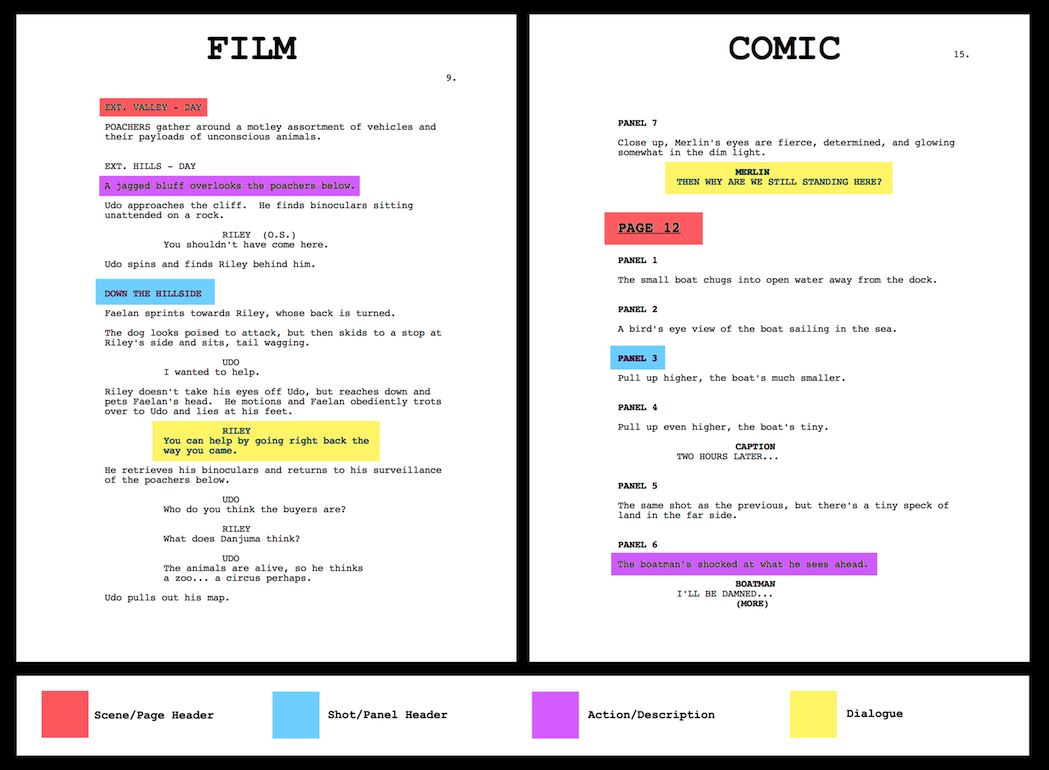While there’s no 100% accepted industry standard format for scripts of any type, they all share much in common. The main similarities stem from the fact that scripts are not intended to be read by an audience like, say, a novel would be. Instead, they are maps that guide the creation of media rather than the media itself. Whether it’s the performance of a play, the filming of a television show or movie, or the illustrating of a graphic novel or comic book, scripts are at work behind the scenes, part technical document, part (if done well) entertaining read of the story.
Here’s a compare and contrast of a film and comic script:
Dialogue and action/description are essentially the same for both, but looking at the other elements, it becomes clear how the differences are dictated by the practical needs of film crews or illustrators during production of their movies or books.
For example, in a film script, the labeling of scenes makes it easier to break down the story into filmable pieces. It might be nice to know exactly which ones take place outside or indoors (EXT. vs. INT.) so a film crew can shoot multiple scenes with one setup, even if they don’t appear sequentially in the story. (Saves big $!) Likewise, it might be good to know which scenes occur during the DAY or NIGHT for the same reason.
In a comic script there are no such needs. The penciller can draw a panel that takes place outside at night, drink a cup of coffee, and move right on to draw the next panel that takes place inside and during the day. It makes no practical difference. What many comic scripts do to grease the wheels of productivity is spell out exactly what chunks of the story constitute separate panels, and how many panels appear on each page of the finished book. But there are also comic writers who leave all of that up to the illustrator, delegating the control over the pacing and flow of the story. But to a type-A writer like myself… that’s just crazy talk.
This topic could fill a book… and has. Many of them. But suffice it to say, if you’re a screenwriter who wants to learn how to format a story for comics, or vice versa, then you’re bound to already be halfway there!

